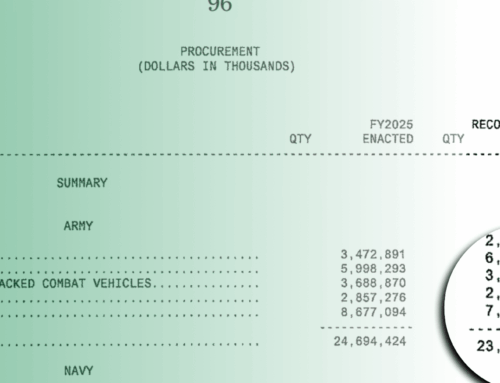Just in time for Tax Day, the Government Accountability Office (GAO), Congress’s nonpartisan investigative arm, published a report on the seemingly endless cost growth and ongoing sustainment challenges facing the most expensive weapon system ever built, the F-35 Lightning II Joint Strike Fighter.
The program, which was once projected to cost taxpayers $1.7 trillion over its lifecycle, is now projected to surpass $2 trillion in acquisition and sustainment. In just five years, sustainment cost estimates jumped 44 percent, increasing from $1.1 trillion in 2018 to $1.58 trillion in 2023. Looking at annual sustainment costs per aircraft, the original target of $4.1 million has been replaced with a $6.6 million estimated annual cost. The remainder of the $2 trillion estimate covers acquisition costs, projected at $442 billion over the program’s duration.
To provide some context, a portion of this cost increase stems from the Pentagon extending the F-35’s planned lifecycle by a decade. Presumably, this extension means taxpayers won’t be asked to pay for the F-35’s successor as soon, but let’s not get ahead of ourselves.
The 11-year extension to the planned service life of the F-35 is only an increase of about 18 percent, so it can’t explain the entirety of the jump. According to the GAO, other important factors influencing life cycle estimates include “the number of planned aircraft procurements, where and when new aircraft will enter the services’ fleets, the planned retirement dates of aircraft, and inflation cost factors.”
While the GAO report stops short of fully detailing the origins of the cost increases, it notes that sustainment challenges, long reported by the GAO, are partially to blame.
Additionally, flaws in the Pentagon’s methods of estimating costs likely contribute to the growth. Notably, according to GAO’s analysis, “the program does not generally consider risk and uncertainty in its sustainment estimate for the program.” The F-35 Joint Program Office also only considers approved modernization plans when estimating costs. Still, these plans constantly evolve, so as new plans call for upgrades, costs continue to rise.
However, even more stunning than the cost growth is that the F-35’s mission-capable rate, or the percentage of time it can fly and perform at least one of its assigned missions, is moving in the wrong direction.
Between 2019 and 2023, no variants of the F-35 achieved their minimum performance targets—80 percent mission capability for the F-35A and 75 percent for the B and C variants. Furthermore, they failed to reach their performance goals of 90 percent for the F-35A and 85 percent for the B and C variants. During this period, 2020 was the peak year for the F-35A and F-35B, with mission-capable rates of 71.4 percent and 67.7 percent, respectively. By 2023, these rates had declined to 51.9 percent and 59.7 percent. The F-35C saw its highest mission-capable rate in 2022 at 63.4 percent, dropping slightly to 61.9 percent in 2023. Their full mission capable rates, the percentage of time that the aircraft is able to fly and perform all of their tasked missions, dropped across all three variants from 2022 to 2023. The F-35A’s full mission capability rate dropped from 43.5 percent to 36.4 percent. The F-35B dropped from 16 percent to 14.9 percent. And the F-35C dropped from 20.9 percent to 19.2 percent.
According to the GAO, the challenges leading to this overall lack of readiness include “a heavy reliance on contractors, inadequate training, lack of technical data, lack of spare parts, and lack of support equipment.”
Since 2014, the GAO has made 43 recommendations to improve the F-35 program. According to GAO, “While DOD concurred with many of these recommendations and has implemented some of them, 30 (about 70 percent) remain unimplemented.”
As the Pentagon pursues plans for a new sixth-generation fighter jet, it would do well to learn from the mistakes of the F-35 program. In the meantime, it should work to correct those mistakes to the extent possible and mitigate future cost growth by implementing the GAO’s recommendations.
To learn more about the challenges facing the F-35, read the full GAO report here.










